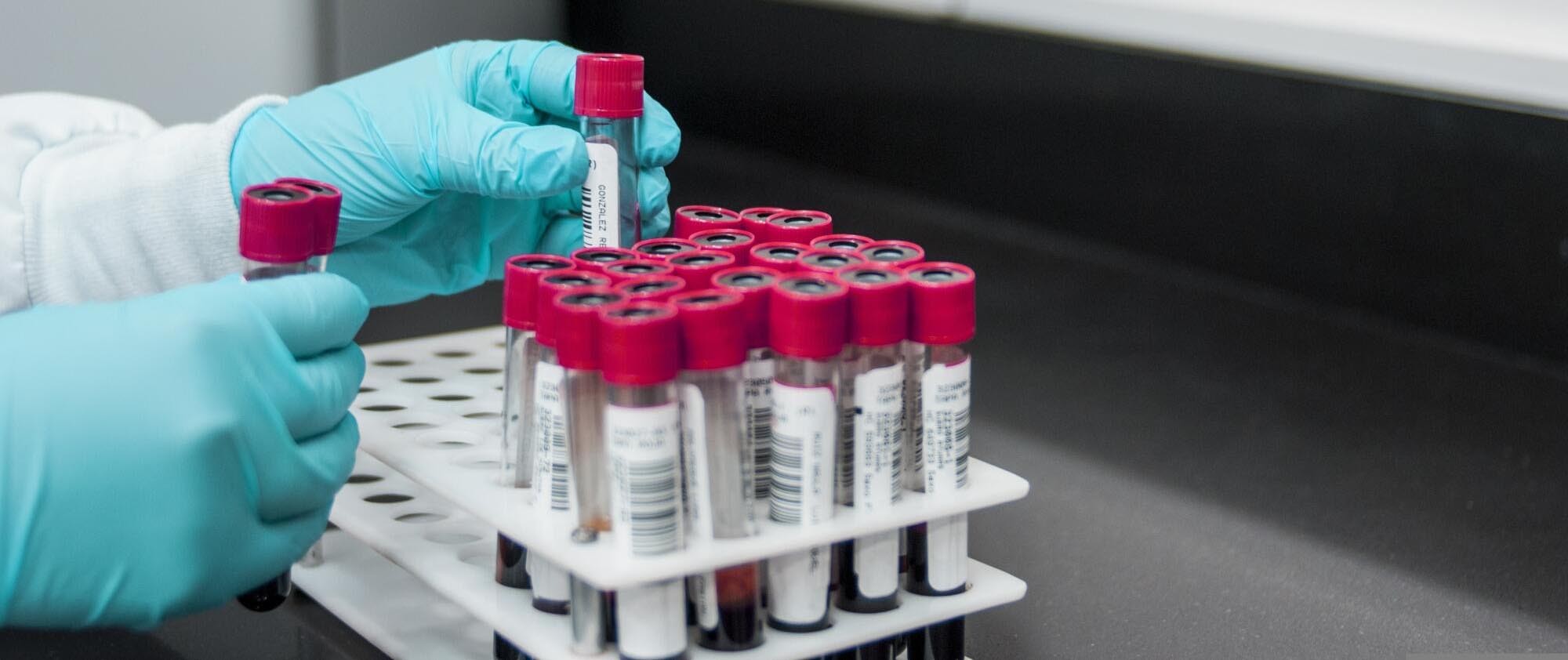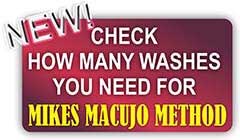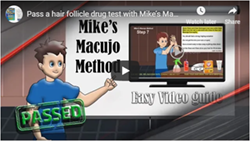Last Updated on March 22, 2024
More and more employers will ask you to take a drug test. When it comes to checking if someone has used drugs, many employers go for the hair follicle drug test because it can look back months into your past. This might sound daunting, but there is good news.
With the right approach, this test doesn't have to be a roadblock on your career path. Enter the world of Macujo's detox shampoo, your secret weapon in making sure you are ready for this test.
So, can a hair follicle test go back 12 months? Let's find out.
Can a Hair Follicle Test Go Back 12 Months?
When it comes to the nitty-gritty of a hair follicle drug test, there is a lot of chatter out there. One common question is whether these tests can really take a peek into your past drug use, stretching back as far as 12 months.
First off, a hair follicle drug test is not a time machine, but it is pretty close. This test works by analyzing a small sample of your hair to check for drug use. Since hair grows about half an inch per month, the length of hair tested can indeed give a snapshot of your drug use history. However, most tests focus on the most recent 1.5 inches of growth, which represents approximately the last 90 days.
Now, about that 12-month myth. While it is technically possible to detect drug use over longer periods if longer hair samples are available, in practice, most employers stick to the 90-day window. Testing beyond this period is less common and becomes less reliable for various reasons, including the way hair grows and how it is affected by environmental factors and personal care habits.
While hair follicle tests are powerful, the idea that they can accurately track drug use for a full year is more myth than reality. The standard window of detection is much closer to three months, which is still plenty of time for those substances to show up.
Understanding this helps clarify what you're up against and how products like Macujo's detox shampoo can play a crucial role in preparing for your test.
The Science Behind Hair Analysis
Delving deeper into the science of hair analysis reveals a world where biology and chemistry intersect, offering insights into how drugs are integrated into hair and subsequently detected. It involves understanding the unique structure of hair and the biochemical mechanisms that allow drug metabolites to be encapsulated within.
Human hair has three layers:
- Cuticle
- Cortex
- Medulla
The cortex, the middle layer, is where most drugs are deposited. This incorporation occurs when drugs and their metabolites in the bloodstream diffuse into the hair follicle and become incorporated into the hair cells as they form. As these cells keratinize (harden) and become part of the hair shaft, they trap the drugs within, creating a long-term record of drug use.
Several factors influence the process by which drugs enter the hair, including:
- The chemical properties of the drug
- Blood flow to the hair follicle
- The melanin content of the hair
Melanin, the pigment responsible for hair color, can bind certain drugs more effectively than others, which may affect the concentration of drugs found in different types of hair. Additionally, acidic environments within the hair follicle can promote the transfer of drugs from the bloodstream into the hair.
Detection Window and Hair Growth Cycles
Hair on the scalp goes through three main growth cycles:
- Anagen (growth phase)
- Catagen (transitional phase)
- Telogen (resting phase)
The anagen phase, lasting several years, is most relevant to drug testing because hair is actively growing and incorporating substances from the bloodstream. Since the standard test analyzes 1.5 inches of hair, it predominantly assesses drug use during the most recent anagen phase.
However, it's crucial to understand that not all hairs grow at the same rate, nor are they all in the same growth phase at any given time. This variability introduces a level of complexity into hair drug testing, underscoring the importance of standardized testing procedures to ensure accuracy and reliability.
The science behind hair analysis is a testament to the body's incredible ability to record and store information about its environment and exposures, including drug use. This intricate process allows for a detailed and durable record of an individual's drug intake, captured within the strands of their hair.
It highlights the sophistication of methods like detox shampoos designed to address and mitigate these biochemical markers ahead of a hair follicle drug test.
What Makes Macujo Aloe Rid Shampoo Effective?
Macujo Aloe Rid Shampoo differentiates itself significantly in the realm of hair detoxification, not merely as a product but as a crucial part of a comprehensive strategy.
The formulation of Macujo Aloe Rid Shampoo is engineered to address the detoxification process at a molecular level. Unlike ordinary detox shampoos that cleanse the surface, this shampoo penetrates deep into the hair shaft, targeting the cortex. This is where the metabolites of drugs reside.
Propylene glycol stands out in its ingredients list for its capacity to open up the hair's cuticle, facilitating a deeper cleanse than surface-level products can achieve.
Moreover, the inclusion of aloe vera and other conditioning agents ensures that the hair maintains its health and moisture. This aspect is crucial, as detox processes can often lead to dryness and damage, compromising hair appearance.
Integration with Mike's Macujo Method
The efficacy of Macujo Aloe Rid Shampoo is markedly enhanced when utilized as part of Mike's Macujo Method. This method is a systematic approach that amplifies the detoxifying power of the shampoo.
It encompasses a series of pre-wash and rinse steps that adjust the pH level of the hair, encouraging the cuticle to open further. This preparation is key to enabling the deep cleansing action of the shampoo.
By adhering to Mike's Macujo Method, users engage in a targeted detoxification process that extends beyond superficial cleaning. This method ensures the removal of toxins from within the hair shaft.
The combination of Macujo Aloe Rid Shampoo with Mike's Macujo Method offers a dual approach to hair detoxification. The methodical application of the shampoo, coupled with the strategic steps of the method, actively removes the compounds that hair follicle tests seek.
Detox Shampoo: How It Works
Detox shampoos, particularly those designed for passing hair follicle drug tests, operate on a sophisticated level to cleanse hair of drug metabolites. These shampoos are not ordinary hair care products. They are formulated with specific ingredients that target the removal of traces of drugs from both the hair follicle and the cortex.
Targeted Cleansing of the Hair Follicle and Cortex
The primary objective of a detox shampoo is to reach the inner layers of the hair, beyond the external cuticle. The cuticle, the hair's outermost layer, acts as a protective barrier. Detox shampoos contain specific compounds designed to penetrate this barrier and reach the cortex, where drug metabolites are stored.
Once the shampoo reaches the cortex, it works to dissolve and wash away the metabolites embedded within it. This process is facilitated by ingredients like propylene glycol, which has a high capacity to penetrate the hair shaft, and surfactants that help in dissolving the metabolites, making them easier to rinse out of the hair.
The Importance of Deep Cleaning
Deep cleaning is crucial in the context of preparing for a hair follicle drug test because superficial cleansing will not remove the metabolites that tests detect. Drug metabolites bind to the keratin structure within the hair cortex, integrating themselves into the hair's growth history. Detox shampoos must therefore break down these bonds and flush out the metabolites to effectively cleanse the hair.
The science behind detoxifying hair involves a combination of chemistry and biology. The shampoo's ingredients must be able to interact with the drug molecules and their metabolites at a molecular level, breaking them free from the keratin and allowing them to be washed away. This requires a delicate balance of ingredients that can penetrate deep without damaging the hair structure.
The Role of Detox Shampoo in Hair Health
While the primary aim of detox shampoos is to cleanse the hair of unwanted substances, it is also important that they do not compromise the hair's health. High-quality detox shampoos are formulated with conditioning agents to ensure that, while they aggressively target drug metabolites, they also protect and nourish the hair.
This dual function ensures that the detox process does not leave the hair brittle, dry, or damaged.
Securing Your Future: Beyond the 12-Month Myth
While the question, "Can a hair follicle test go back 12 months?" stirs curiosity, the real focus should be on ensuring your hair tells the right story today. Macujo offers a tried-and-true solution with its Macujo Aloe Rid Shampoo, coupled with Mike's Macujo Method, to effectively cleanse your hair of drug metabolites.
Our unique formula targets deep-set toxins and nourishes your hair, setting us apart as your go-to detox solution. Don't let drug residues stand in the way of your career aspirations. Trust Macujo to clear the path to your success.
Visit our product now and take the first step towards a good hair analysis.






